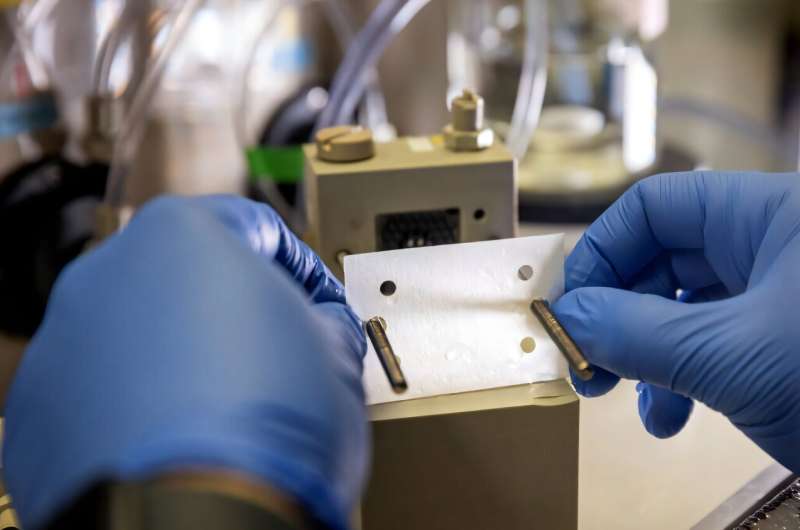
Desalination plants are an important source of freshwater in arid regions and could reduce harmful waste using electricity and new membranes developed at the University of Michigan.
The new membranes could help these plants cut down or completely eliminate waste generated during the process of converting seawater into drinking water. Currently, liquid brine waste is stored in ponds until the water evaporates, leaving behind solid salt or concentrated brine that requires further processing. The slow evaporation process increases the risk of contaminating groundwater.
Another issue is the limited space for waste storage. For every liter of drinking water produced, desalination plants generate 1.5 liters of brine. Globally, over 37 billion gallons of brine waste is produced daily, according to a UN report. When there is a shortage of space for evaporation ponds, desalination plants resort to injecting the brine underground or releasing it into the ocean, which can harm marine ecosystems due to rising salt levels.
Jovan Kamcev, an assistant professor of chemical engineering at U-M, mentioned, “There’s a strong demand in the desalination industry for a more sustainable solution. Our technology offers the potential to reduce waste and energy usage.”
To address the issue of brine waste, desalination engineers aim to concentrate the salt for easy crystallization in industrial vats instead of large evaporation ponds. The separated water can be used for drinking or irrigation purposes, while the solid salt can be harvested for valuable products such as lithium for batteries, magnesium for alloys, and potassium for fertilizers.
While desalination plants typically concentrate brines by heating and evaporating the water, which is energy-intensive, electrodialysis offers a more energy-efficient alternative. This process uses electricity to concentrate salt ions in water, allowing for high salt concentrations without consuming excessive energy.
The electrodialysis process involves water passing through channels separated by membranes, with each membrane having an electrical charge opposite to its neighbors. Positive salt ions move towards a negatively charged electrode and are stopped by a positively charged membrane, while negative ions move towards a positive electrode and are stopped by a negative membrane. This results in streams of purified water and concentrated brine.
However, electrodialysis has its limitations with high salt concentrations. The membranes can start leaking ions as the salt concentration increases. To overcome this challenge, researchers have developed membranes with a high concentration of charged molecules that enhance ion-repelling power and conductivity, resulting in more efficient movement with less power.
The new membranes use carbon connectors to prevent swelling and dilution of the charge caused by absorbing water. By controlling the level of leakiness and conductivity, these membranes can be customized for various purposes, providing a sustainable solution to the global water crisis.
David Kitto, a postdoctoral fellow in chemical engineering and the first author of the study, mentioned, “Our study shows a wide range of choices for these membranes, offering hope for making desalination a sustainable solution to the global water crisis.”
More information:
David Kitto et al, Fast and selective ion transport in ultrahigh-charge-density membranes, Nature Chemical Engineering (2025). DOI: 10.1038/s44286-025-00205-x

